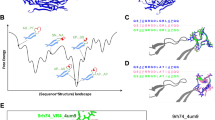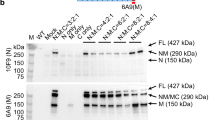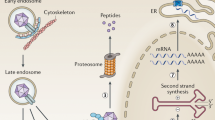Abstract
Systemic gene delivery into muscle has been a major challenge for muscular dystrophy gene therapy, with capillary blood vessels posing the principle barrier and limiting vector dissemination. Previous efforts to deliver genes into multiple muscles have relied on isolated vessel perfusion or pharmacological interventions to enforce broad vector distribution. We compared the efficiency of multiple adeno-associated virus (AAV) vectors after a single injection via intraperitoneal or intravenous routes without additional intervention. We show that AAV8 is the most efficient vector for crossing the blood vessel barrier to attain systemic gene transfer in both skeletal and cardiac muscles of mice and hamsters. Serotypes such as AAV1 and AAV6, which demonstrate robust infection in skeletal muscle cells, were less effective in crossing the blood vessel barrier. Gene expression persisted in muscle and heart, but diminished in tissues undergoing rapid cell division, such as neonatal liver. This technology should prove useful for muscle-directed systemic gene therapy.
This is a preview of subscription content, access via your institution
Access options
Subscribe to this journal
Receive 12 print issues and online access
$209.00 per year
only $17.42 per issue
Buy this article
- Purchase on SpringerLink
- Instant access to full article PDF
Prices may be subject to local taxes which are calculated during checkout





Similar content being viewed by others
References
Watchko, J. et al. Adeno-associated virus vector-mediated minidystrophin gene therapy improves dystrophic muscle contractile function in mdx mice. Hum. Gene Ther. 13, 1451–1460 (2002).
Wang, B., Li, J. & Xiao, X. From the cover: adeno-associated virus vector carrying human minidystrophin genes effectively ameliorates muscular dystrophy in mdx mouse model. Proc. Natl. Acad. Sci. USA 97, 13714–13719 (2000).
van Deutekom, J.C. & van Ommen, G.J. Advances in Duchenne muscular dystrophy gene therapy. Nat. Rev. Genet. 4, 774–783 (2003).
Harper, S.Q. et al. Modular flexibility of dystrophin: implications for gene therapy of Duchenne muscular dystrophy. Nat. Med. (see comments) 8, 253–261 (2002).
Manno, C.S. et al. AAV-mediated factor IX gene transfer to skeletal muscle in patients with severe hemophilia B. Blood 101, 2963–2972 (2003).
Song, S. et al. Sustained secretion of human alpha-1-antitrypsin from murine muscle transduced with adeno-associated virus vectors. Proc. Natl. Acad. Sci. USA 95, 14384–14388 (1998).
Fraites, T.J. Jr. et al. Correction of the enzymatic and functional deficits in a model of pompe disease using adeno-associated virus vectors. Mol. Ther. 5, 571–578 (2002).
Xiao, X., Li, J. & Samulski, R.J. Efficient long-term gene transfer into muscle tissue of immunocompetent mice by adeno-associated virus vector. J. Virol. 70, 8098–8108 (1996).
Kessler, P.D. et al. Gene delivery to skeletal muscle results in sustained expression and systemic delivery of a therapeutic protein. Proc. Natl. Acad. Sci. USA 93, 14082–14087 (1996).
Fisher, K.J. et al. Recombinant adeno-associated virus for muscle directed gene therapy. Nat. Med. 3, 306–312 (1997).
Kawada, T. et al. Rescue of hereditary form of dilated cardiomyopathy by rAAV-mediated somatic gene therapy: amelioration of morphological findings, sarcolemmal permeability, cardiac performances, and the prognosis of TO-2 hamsters. Proc. Natl. Acad. Sci. USA 99, 901–906 (2002).
Budker, V., Zhang, G., Danko, I., Williams, P. & Wolff, J. The efficient expression of intravascularly delivered DNA in rat muscle. Gene Ther. 5, 272–276 (1998).
Greelish, J.P. et al. Stable restoration of the sarcoglycan complex in dystrophic muscle perfused with histamine and a recombinant adeno-associated viral vector. Nat. Med. 5, 439–443 (1999).
Hoshijima, M. et al. Chronic suppression of heart-failure progression by a pseudophosphorylated mutant of phospholamban via in vivo cardiac rAAV gene delivery. Nat. Med. 8, 864–871 (2002).
Li, J. et al. Efficient and long-term intracardiac gene transfer in delta-sarcoglycan-deficiency hamster by adeno-associated virus-2 vectors. Gene Ther. 10, 1807–1813 (2003).
Rucker, M. et al. Rescue of enzyme deficiency in embryonic diaphragm in a mouse model of metabolic myopathy: pompe disease. Development 131, 3007–3019 (2004).
Cordier, L. et al. Rescue of skeletal muscles of gamma-sarcoglycan-deficient mice with adeno-associated virus-mediated gene transfer. Mol. Ther. 1, 119–129 (2000).
Dressman, D. et al. Delivery of alpha- and beta-Sarcoglycan by recombinant adeno-associated virus: efficient rescue of muscle, but differential toxicity. Hum. Gene Ther. 13, 1631–1646 (2002).
Chao, H. et al. Several log increase in therapeutic transgene delivery by distinct adeno-associated viral serotype vectors. Mol. Ther. 2, 619–623 (2000).
Hammermann, M. et al. Salt-dependent DNA superhelix diameter studied by small angle neutron scattering measurements and Monte Carlo simulations. Biophys. J. 75, 3057–3063 (1998).
Yoshida, K. et al. Fabrication of a new substrate for atomic force microscopic observation of DNA molecules from an ultrasmooth sapphire plate. Biophys. J. 74, 1654–1657 (1998).
Pruchnic, R. et al. The use of adeno-associated virus to circumvent the maturation-dependent viral transduction of muscle fibers. Hum. Gene Ther. 11, 521–536 (2000).
Xiao, W. et al. Gene therapy vectors based on adeno-associated virus type 1. J. Virol. 73, 3994–4003 (1999).
Gao, G.P. et al. Novel adeno-associated viruses from rhesus monkeys as vectors for human gene therapy. Proc. Natl. Acad. Sci. USA 99, 11854–11859 (2002).
Gao, G. et al. Clades of adeno-associated viruses are widely disseminated in human tissues. J. Virol. 78, 6381–6388 (2004).
Summerford, C. & Samulski, R.J. Membrane-associated heparan sulfate proteoglycan is a receptor for adeno-associated virus type 2 virions. J. Virol. 72, 1438–1445 (1998).
Walters, R.W. et al. Binding of adeno-associated virus type 5 to 2,3-linked sialic acid is required for gene transfer. J. Biol. Chem. 276, 20610–20616 (2001).
Di Pasquale, G. et al. Identification of PDGFR as a receptor for AAV-5 transduction. Nat. Med. 9, 1306–1312 (2003).
Kaludov, N., Brown, K.E., Walters, R.W., Zabner, J. & Chiorini, J.A. Adeno-associated virus serotype 4 (AAV4) and AAV5 both require sialic acid binding for hemagglutination and efficient transduction but differ in sialic acid linkage specificity. J. Virol. 75, 6884–6893 (2001).
Wang, Z. et al. Rapid and highly efficient transduction by double-stranded adeno-associated virus vectors in vitro and in vivo. Gene Ther. 10, 2105–2111 (2003).
Xu, L. et al. CMV-beta-actin promoter directs higher expression from an adeno-associated viral vector in the liver than the cytomegalovirus or elongation factor 1 alpha promoter and results in therapeutic levels of human factor X in mice. Hum. Gene Ther. 12, 563–573 (2001).
Gregorevic, P. et al. Systemic delivery of genes to striated muscles using adeno-associated viral vectors. Nat. Med. 10, 828–834 (2004).
Li, J. et al. rAAV vector-mediated sarcogylcan gene transfer in a hamster model for limb girdle muscular dystrophy. Gene Ther. 6, 74–82 (1999).
Li, X., Eastman, E.M., Schwartz, R.J. & Draghia-Akli, R. Synthetic muscle promoters: activities exceeding naturally occurring regulatory sequences. Nat. Biotechnol. 17, 241–245 (1999).
Hagstrom, J.E. et al. A facile nonviral method for delivering genes and sirnas to skeletal muscle of mammalian limbs. Mol. Ther. 10, 386–398 (2004).
Arruda, V.R. et al. Regional intravascular delivery of AAV-2-F.IX to skeletal muscle achieves long-term correction of hemophilia B in a large animal model. Blood; published online 12 October 2004.
Lee, C.G. et al. Vascular endothelial growth factor (VEGF) induces remodeling and enhances T(H)2-mediated sensitization and inflammation in the lung. Nat. Med. 10, 1095–1103 (2004).
Kern, A. et al. Identification of a heparin-binding motif on adeno-associated virus type 2 capsids. J. Virol. 77, 11072–11081 (2003).
Hauck, B., Chen, L. & Xiao, W. Generation and characterization of chimeric recombinant AAV vectors. Mol. Ther. 7, 419–425 (2003).
Rabinowitz, J.E. et al. Cross-dressing the virion: the transcapsidation of adeno-associated virus serotypes functionally defines subgroups. J. Virol. 78, 4421–4432 (2004).
Shi, W., Arnold, G.S. & Bartlett, J.S. Insertional mutagenesis of the adeno-associated virus type 2 (AAV2) capsid gene and generation of AAV2 vectors targeted to alternative cell-surface receptors. Hum. Gene Ther. 12, 1697–1711 (2001).
Loiler, S.A. et al. Targeting recombinant adeno-associated virus vectors to enhance gene transfer to pancreatic islets and liver. Gene Ther. 10, 1551–1558 (2003).
Bartlett, J.S., Kleinschmidt, J., Boucher, R.C. & Samulski, R.J. Targeted adeno-associated virus vector transduction of nonpermissive cells mediated by a bispecific F(ab'gamma)2 antibody. Nat. Biotechnol. (erratum in Nat. Biotechnol. 17, 393, 1999) 17, 181–186 (1999).
Xiao, X., Li, J. & Samulski, R.J. Production of high-titer recombinant adeno-associated virus vectors in the absence of helper adenovirus. J. Virol. 72, 2224–2232 (1998).
Rabinowitz, J.E. et al. Cross-packaging of a single adeno-associated virus (AAV) type 2 vector genome into multiple AAV serotypes enables transduction with broad specificity. J. Virol. 76, 791–801 (2002).
Rutledge, E.A., Halbert, C.L. & Russell, D.W. Infectious clones and vectors derived from adeno-associated virus (AAV) serotypes other than AAV type 2. J. Virol. 72, 309–319 (1998).
Li, J., Samulski, R.J. & Xiao, X. Role for highly regulated rep gene expression in adeno-associated virus vector production. J. Virol. 71, 5236–5243 (1997).
Snyder, R., Xiao, X. & Samulski, R.J. Production of recombinant adeno-associated viral vectors. in Current Protocols in Human Genetics (eds. Dracopoli, N. et al.) 12.11.11–12.12.23 (John Wiley & Sons Ltd., New York, 1996).
Sands, M.S. & Barker, J.E. Percutaneous intravenous injection in neonatal mice. Lab. Anim. Sci. 49, 328–330 (1999).
Acknowledgements
We thank Michelle Raab for critical reading of the manuscript; Guangping Gao and James Wilson for the AAV7 and 8 packaging plasmid; David W. Russell for the AAV6 packaging plasmid. This work is supported by National Institutes of Health grants NS46546, AR45967 and AR50595 to X.X.
Author information
Authors and Affiliations
Corresponding author
Ethics declarations
Competing interests
The authors declare no competing financial interests.
Supplementary information
Supplementary Fig. 1
Gene expression and vector DNA in testis after i.v. administration of AAV1, AAV6 and AAV8 in adult mice. (PDF 191 kb)
Supplementary Fig. 2
Comparison of AAV2 and AAV8 in adult hamsters for systemic gene delivery. (PDF 351 kb)
Supplementary Fig. 3
High efficiency δ-sarcoglycan (δ-SG) gene transfer and profound improvement in histophathology of heart and muscle of TO-2 hamsters. (PDF 105 kb)
Rights and permissions
About this article
Cite this article
Wang, Z., Zhu, T., Qiao, C. et al. Adeno-associated virus serotype 8 efficiently delivers genes to muscle and heart. Nat Biotechnol 23, 321–328 (2005). https://doi.org/10.1038/nbt1073
Received:
Accepted:
Published:
Issue Date:
DOI: https://doi.org/10.1038/nbt1073



